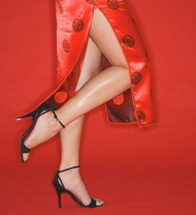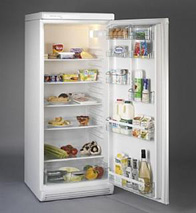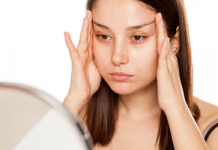 Beautiful legs are known to have been glorified in poems. When a woman with beautiful legs passes by, both men and women cannot help looking at them. Unfortunately not all women have beautiful legs attracting others’ eyes, in some cases varicose veins are the reason. About 10% of the population are today affected by varicose veins, among them more women than men suffer from it. Besides cosmetic problems, varicose veins are often painful, especially when standing or walking. The symptoms are swelling, restlessness, leg sores, itching, leg cramps, feeling heaviness in the legs and fatigue. This story will tell you, what are varicose veins, what causes varicose veins, who is prone to varicose veins and how to treat this disease.
Beautiful legs are known to have been glorified in poems. When a woman with beautiful legs passes by, both men and women cannot help looking at them. Unfortunately not all women have beautiful legs attracting others’ eyes, in some cases varicose veins are the reason. About 10% of the population are today affected by varicose veins, among them more women than men suffer from it. Besides cosmetic problems, varicose veins are often painful, especially when standing or walking. The symptoms are swelling, restlessness, leg sores, itching, leg cramps, feeling heaviness in the legs and fatigue. This story will tell you, what are varicose veins, what causes varicose veins, who is prone to varicose veins and how to treat this disease.
What Are Varicose Veins?
Varicose veins are abnormally enlarged veins that can be flesh colored, dark purple or blue. They normally appear close to the skin’s surface and occur on legs as a result of obstruction of the veins or malfunctioning valves inside the veins like prolonged pressure. Varicose veins are distinguished by the size and location of the veins. There exist reticular veins (blue veins) and spider veins (or telangiectasias).
What Causes Varicose Veins?
The following factors contribute to the formation of varicose veins:
- standing or sitting for long periods of time,
- no or poor bodily exercise,
- overweight,
- frequent sitting with crossed legs,
- heavy lifting (because of the strong pressure on legs),
- pregnancy,
- heart failure,
- liver disease,
- abdominal tumors,
- heredity,
- deficiency of Vitamin C (because it weakens the collagen structure in the vein walls).
Clever nature made our veins so, that they have leaflet valves, which prevent blood from flowing backwards. One of the missions of leg muscles is to pump the veins to return blood to the heart. In case the veins become enlarged, the leaflets of the valves no longer meet properly, and the valves cannot work anymore. Thus, the blood collects in the veins and they enlarge even more. As it was said above, varicose veins are common in the superficial veins of the legs. Exactly they are the subject to high pressure during standing.
Varicose Veins Treatment
Varicose veins should be properly treated, otherwise there can emerge complications. First of all, surgical treatment of varicose veins is possible. One of them are veins stripping, during which the affected veins are removed. But as most of the blood in legs is circulating through deep veins, the superficial veins, which transfer only about 10% of blood, can be removed without considerable harm.
Among non-surgical treatment methods of varicose veins there is Sclerotherapy. The procedure includes the injection of a medicine into the vessels, which makes them shrink. Sclerotherapy should be ultrasound-guided. In this case ultrasound helps the physician to visualize the underlying vein, which allows to deliver and monitor the injection. Along with it varicose veins can be treated with help of radiofrequency and laser ablation.
Varicose Veins Treatment at Home
There also exist home remedies for varicose veins treatment. It includes the change of your diet, exercising and other tips.
 As concerns the food, people with varicose veins should eat a balanced diet low in fat and carbohydrates, it is also useful to eat plenty of fish and fresh fruits and vegetables. In order to prevent or treat varicose veins, eat many blackberries and cherries, consume food high in fiber; also including ginger, onions, garlic and pineapple in your diet is beneficial. What should be avoided by people suffering from varicose veins are sugar, ice cream, fried foods, peanuts, junk foods, cheeses, tobacco, salt, alcohol, animal protein, and processed and refined foods.
As concerns the food, people with varicose veins should eat a balanced diet low in fat and carbohydrates, it is also useful to eat plenty of fish and fresh fruits and vegetables. In order to prevent or treat varicose veins, eat many blackberries and cherries, consume food high in fiber; also including ginger, onions, garlic and pineapple in your diet is beneficial. What should be avoided by people suffering from varicose veins are sugar, ice cream, fried foods, peanuts, junk foods, cheeses, tobacco, salt, alcohol, animal protein, and processed and refined foods.
Not only changing your diet can ease the symptoms of varicose veins, daily exercises providing good blood circulation are good too. They are walking, swimming and bicycling. It is very important to maintain a healthy weight.
Other useful tips to ease the symptoms are the following:
- Elevate your feet at least once a day for 15 minutes. You can do it while watching TV or just having rest.
- Do not wear tight clothes, because they restrict blood flow.
- Avoid standing or sitting for long periods of time.
- Give rest to your feet putting them on an object that is elevated from the floor, when sitting.
- Avoid putting any unnecessary pressure on your legs.
- If at work you have to sit all day long, take breaks to walk around.
- When sitting, also flex your muscles and wiggle your toes to increase blood flow.
- Avoid crossing your legs doing heavy lifting.
- Apply Castor oil over the varicose veins after bathing.
- Avoid scratching the itchy skin above varicose veins, because this can cause bleeding.
- Wear special elastic stockings.
These pieces of advice are not only useful for those already having varicose veins, but also decrease the likelihood of developing varicose veins at those who have not got them yet, but who is, for example, hereditarily predisposed to varicose veins. So, dear beauties, if your mom and your grandma have varicose veins, you should follow these tips in order to prevent varicose veins.










